The Department of Biodiversity, Earth and Environmental Science at Drexel University offers graduate students a profound understanding of environmental processes and the broad, worldwide factors that impact them. Drexel's Ecology, Evolution and Earth Systems master’s (MS) degree program and doctoral (PhD) degree program provides scholars with a comprehensive knowledge of and a solid foundation in technical research skills, hands-on field experience and the deep critical analysis needed to address the world’s most challenging environmental concerns.
Visit our department
- Master of Science (MS) – part- or full-time plans of study include thesis and non-thesis options.
- Doctorate (PhD) – students develop a custom plan of study guided by their faculty advisor.
Program Highlights
Quicklinks
Program Faculty
Department faculty are dedicated mentors who expertly guide graduate students in building programs of study to meet their academic and career interests. Faculty encourage students to immerse themselves in research opportunities, discover world-class facilities and explore essential field sites. In addition, faculty help prepare students to become effective communicators, advocates and leaders who confidently share research findings with their peers and make science more accessible to the public.
| |
Faculty Member |
Expertise |
|
|
Professor
PISB 324
so356@drexel.edu
|
- The O’Donnell Lab
- Brain plasticity and the evolution of brain structure
- Social behavior and division of labor, especially of eusocial Hymenoptera
- Thermal ecology and thermal physiology
- Network models of social group organization
- Behavior and ecology of bird-army ant interactions
- Human-safe insecticides
|
|
|
Associate Professor of Biology
PISB 320
Mp3754@drexel.edu
|
|
|
|
Professor
PISB 325
jar337@drexel.edu
|
- Roles of bacterial symbionts in ant evolution
- Function, stability, and dynamics of heritable symbiont communities in aphids
- Genomic mechanisms driving correlations between symbiosis and insect ecology
- Coevolutionary histories between insects and their microbes
|
Mentorship Model
The department’s intellectual life centers on graduate students’ innate inquiry, creativity, and energy; our student scientists assertively engage in research, coursework, seminars, journal clubs and scholarly discussions. From the beginning of their course of study, faculty encourage students to immerse themselves in research opportunities, discover world-class facilities and explore essential field sites. These factors enable students to build on their scholarship and contribute to the fields of ecology, evolution, and earth systems field science. In addition, active participation in courses, conferences and presentations prepare students to become effective communicators, advocates and leaders who confidently share research findings with their peers and make science more accessible to the public.
Program Curricula
Our graduate program curricula support a sound professional education encompassing factual and theoretical concepts grounded in primary research skills and training. Students may create an individualized curriculum with consultation and permission from their Research Committee and the Graduate Program Committee. Regardless of the curricula, graduate students must show knowledge of curricular subjects through oral and written examinations.
Research Areas
Graduate students can tailor their academic and career interests across our five core fields of study: ecology, evolution and systematics, biodiversity, conservation, earth and environmental science. Faculty researchers in the Department of Biodiversity, Earth and Environmental Science (BEES) take a hands-on approach when investigating past and present environmental change. Research interests range geographically from the tropics to the Arctic, from local to global scales, and from the smallest phytoplankton to enormous dinosaurs. Faculty use novel techniques and the latest equipment to explore life on Earth and the ecological processes on which life depends. Graduate students work with faculty mentors on extensive and diverse field experiences locally and internationally. Through courses, conferences, and other presentations, students learn how to make their research accessible to broad public audiences and become leading advocates for environmental issues.
Our graduate scholars have ready access to the Academy of Natural Sciences of Drexel University, which holds one of the world’s most comprehensive collections of systematics, evolutionary biology, ecology, and paleontology research. In addition, the Academy is home to the Patrick Center for Environmental Research, where scientists lead efforts to understand watershed processes and develop approaches for conserving them. The Academy’s Center for Systematic Biology and Evolution houses a natural history collection with over 19 million specimens of plants and animals. These renown collections represent a veritable library of life on Earth and are of international significance.
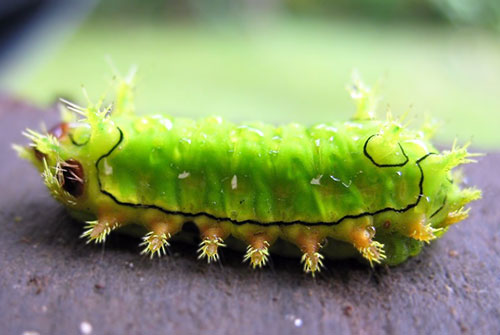
BEES department faculty lead ecological research across several scales and study systems. Graduate students can conduct field-based research locally in the Delaware watershed, across North America at sites in Florida, California and Mexico, and work internationally in Brazil and Costa Rica. Current focus areas include tropical ecology, wetlands and tidal systems ecology, marine and freshwater biogeochemistry, physiological ecology, and insect/microbe interactions.
The O’Donnell Lab
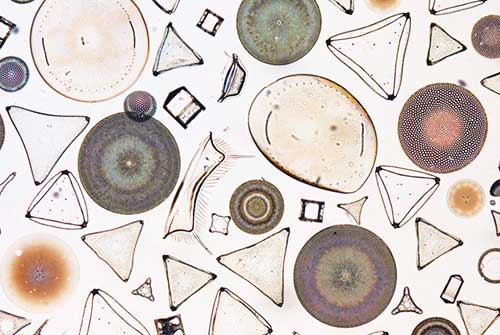
BEES department faculty members in evolution and systematics conduct research across various scales and systems that range from micro- to macro-evolutionary studies. Their research efforts span from higher-level systematics to species-level systematic biology. Much of the departmental research in these areas relies on the biodiversity collections housed at the Academy of Natural Sciences and other similar collections. Graduate students also can conduct field research locally in the mid-Atlantic regions, across North America and internationally, including Mexico, Brazil, Jamaica, Mongolia, and other countries with collaborating scientists. Current focus areas include comparative evolutionary biology, phylogenomics, coevolution, and taxonomy.
The Center for Systematic Biology and Evolution
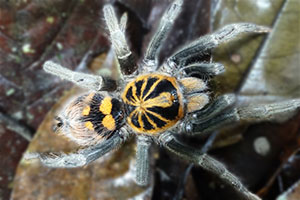
BEES department faculty do research on the taxonomic, functional, and ecological aspects of biodiversity. Graduate students may work on a diverse array of guilds, communities or taxa of organisms. Field work spans aquatic and terrestrial biomes. Current research topics include the effects of ocean acidification on pteropod molluscs, diversity of freshwater green algae and diatoms, functional ecology of aquatic fish and insects, insect microbial symbiont communities, and tropical mixed-species bird flocks.
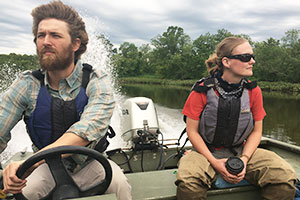
Drawing upon the EEES faculty strengths in ecology and biodiversity, graduate students do research on the maintenance, preservation, and restoration of species, communities, and ecosystems in natural and urban environments affected by anthropogenic climate change. Research areas include stream restoration in the Delaware River watershed, wetland protection-restoration in coastal New Jersey and California, and research on building strikes by migrating birds attracted to urban lights.
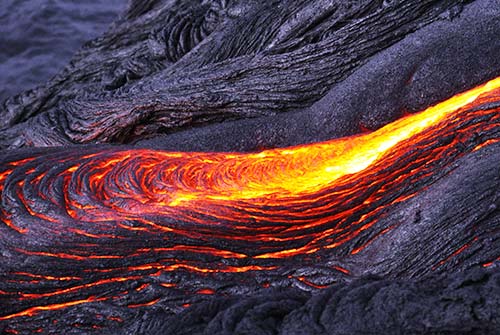
Scientists in the BEES department study significant events and transitions in our planet’s history and the interplay between the solid Earth, its climate, its environment, and the life it sustains. Our graduate students combine computational, laboratory, and fieldwork on local and international research sites from Pennsylvania, Montana, Equatorial Guinea, India, and Indonesia. Current focus areas include paleontology, volcanology, climate change, paleoclimatology, and environmental geochemistry.
BiogeochemistryCoastal Change LabInvertebrate Paleontology
Vertebrate Zoology
Research Partners
Extensive field courses —both locally and internationally— are combined with research opportunities conducted by Drexel faculty in partnership with scientists at The Academy of Natural Sciences of Drexel University. Founded in 1812 as America's first natural history museum, the Academy forged an affiliation with Drexel in 2011 that draws on the academic excellence and research strengths of both institutions. The Academy houses one of the world’s top natural history collections and consists of a multidisciplinary group of environmental scientists and engineers involved in many different field experiences. In partnership with The Academy of Natural Sciences, Drexel University launched The Environmental Collaboratory to catalyze advances in climate action, social justice and human wellbeing.

The Academy of Natural Sciences
Founded in 1812, the Academy of Natural Sciences of Drexel University is a leading natural history museum dedicated to understanding the natural world and inspiring everyone to care for it. The Academy’s 19 million specimens serve as the foundation for an active research program that continues to focus on the critical environmental issues of our time, ranging from evolution and biodiversity to human health and climate change.
The Academy is also internationally recognized for its pioneering work in water. These studies have contributed significantly to the quality of human life by helping to shape public policy concerning the environment. Among the best known of these is The Clean Water Act of 1972 and 1977, which was developed with critical input from Academy scientists.

The Environmental Collaboratory
In partnership with the Academy, The Environmental Collaboratory is a dynamic platform focused on climate action, environmental justice and human wellbeing. Building on its comprehensive research expertise, longstanding relationship with external partners and deep commitment to civic engagement, Drexel and the Academy bring together faculty, staff, students, industry partners and the public sector to pursue community-based solutions to environmental problems.
More than a place or a narrow theme, The Environmental Collaboratory is a groundbreaking approach that unites Drexel, the Academy and communities of need in a shared endeavor to radically create the future and sustain our planet through the integration of education, scholarship, diverse partnerships and our global community.
Global and Local Field Sites
Internationally, faculty and scientists in the department conduct transdisciplinary research programs at Bioko Island, Costa Rica, Ecuador, Israel, Mongolia, Peru, Taiwan and many other biodiverse sites around the globe. Study and research abroad help expand students' horizons and offer valuable hands-on experience across disciplines. Long-term options, such as International Co-op, may offer up to six months of work experience. Short-term options, such as Intensive Courses Abroad, offer international academic experiences that run about 7-10 days during term breaks.
Locally, the Barnegat Bay Field Station in New Jersey is an undeveloped space for biological surveys and estuary studies of diverse coastal habitats, from maritime forests and tidal creeks to upland pine-oak forests and a sandy beach. The forested Lacawac Sanctuary in the Pocono Mountains of Pennsylvania is an ecological field research station and public environmental education facility. Situated in Newtown Square, Pennsylvania, the Willistown Conservation Trust’s Rushton Woods Preserve combines five core research programs in land protection, habitat restoration, sustainable agriculture, bird conservation and watershed.
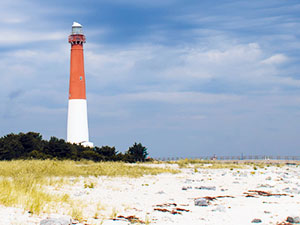
Barnegat Bay Field Station
Take a step back in time to the longest stretch of Barnegat Bay shoreline that remains undeveloped. The Lighthouse Center at the Barnegat Bay Field Station in Waretown, NJ, is situated on 194 acres of rich coastal habitats: a maritime forest, tidal creek, salt marsh, freshwater pond, brackish impoundment, and bayshore environments. Gain hands-on field research in coastal geology, barrier island morphology, oceanography and sedimentology. In addition, the facility can serve as a base for excursions into the Pine Barrens, a heavily forested area containing many interesting deposits related to the last glacial period. The department hosts its Pre-Term Field Experience for first-year undergraduates, as well as other events, at Barnegat Bay Field Station. Owned by NJDEP, Division of Fish and Wildlife, the field station is managed by the Natural Resource Education Foundation of New Jersey.
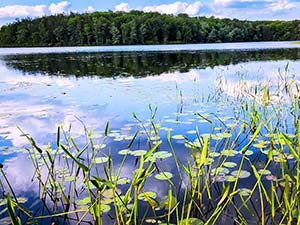
Lacawac Sanctuary
Nestled on a 550-acre tract near the shores of Lake Wallenpaupack in the Northern Poconos, Lacawac Sanctuary combines an environmental education center, nature center and biological field station. Lacawac works with a consortium of colleges and universities to build research partnerships and offer a pristine location for undergraduate and graduate research. The Sanctuary is home to the pristine Lake Lacawac—a 52-acre National Natural Landmark and one of the southernmost glacial lakes in the hemisphere—the Sanctuary boasts more than 45 years of aquatic research and data compilation since its foundation in 1966. In addition, the Sanctuary encompasses multiple bodies of water for comparative studies: the Wallenpaupack Ledges and Partner Ridge, six public hiking trails, deer enclosure plots, a native plants demonstration garden and a natural boreal bog.
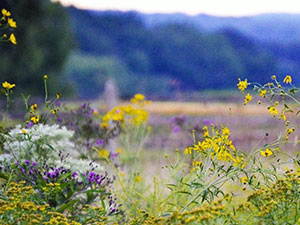
Rushton Woods Preserve
The Willistown Conservation Trust’s Rushton Woods Preserve is an 86-acre treasure of mature woodland, open meadows, a creek, and Rushton Farm. The preserve is the center of the Trust’s Community Farm and Bird Conservation Program. Opened in 2018, the Rushton Conservation Center is on the edge of the permanently protected Rushton Woods Preserve. With Rushton Farm as its neighbor, this community building is submerged in nature, overlooking a colorful rain garden, abundant meadows full of pollinators and bird species, and rows of fresh crops grown for our sustainable agriculture program. Rushton Woods unites the Trust’s five core programs in land protection, habitat restoration, sustainable agriculture, bird conservation, and watershed.
Latest News
Catching up with LeeAnn Haaf '12, PhD '22, Estuary Scientist and Environmental Advocate
As the Assistant Director of Estuary Science at the Partnership for the Delaware Estuary, environmental science alum LeeAnn Haaf '12, PhD '22 is working to ensure a better future for our wetlands.
Read More
Members of BEES Department Present at Academy of Natural Sciences Research Day
The Academy of Natural Sciences of Drexel University recently hosted its annual Research Day, where scientists shared brief, engaging summaries of their research and discoveries from throughout 2023.
Read More
Science Is for Everyone: Grant Support Helps Emily Griffith Share Love of Birds
A childhood love of birds inspired Emily Griffith to pursue a career in ornithology. As she enters her third year in Drexel’s Ecology, Evolution and Earth Systems PhD program, Griffith has been awarded over $10,000 in grant funding to further her research on the differences in plumage between male and female ducks.
Read More
Celebrating 10 Years of BEES With Department Head David Velinsky, PhD
As the Department of Biodiversity, Earth and Environmental Science (BEES) celebrates its 10th anniversary, we spoke with department head David Velinsky, PhD, about the history of the department, its many success stories and how it has grown over the last decade in this Q&A.
Read More
The Future Ghost Forests of New Jersey
Jakes Landing is a centuries-old access point to Dennis Creek in Cape May, New Jersey, where the forest landscape abruptly drops into a tidal saltwater marsh. Near the marsh, row after row of dead Atlantic white cedars juts out of the ground like spikes. Just beyond those are swaths of statuesque loblolly pines that are healthy now, but these are at risk of becoming ghost forests. LeeAnn Haaf, a PhD candidate in Drexel University’s Biodiversity, Earth and Environmental Science (BEES) Department, studies the effects of climate change and sea-level rise on low-lying tree growth in the mid-Atlantic region of the United States.
Read More